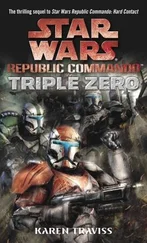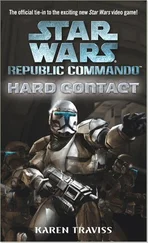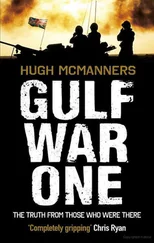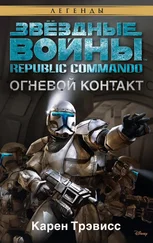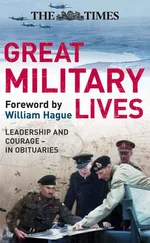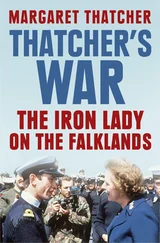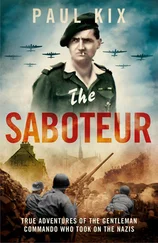Hugh McManners - Falklands Commando
Здесь есть возможность читать онлайн «Hugh McManners - Falklands Commando» весь текст электронной книги совершенно бесплатно (целиком полную версию без сокращений). В некоторых случаях можно слушать аудио, скачать через торрент в формате fb2 и присутствует краткое содержание. Город: London, Год выпуска: 2014, ISBN: 2014, Издательство: Nightstrike Publishing, Жанр: nonf_military, Биографии и Мемуары, на английском языке. Описание произведения, (предисловие) а так же отзывы посетителей доступны на портале библиотеки ЛибКат.
- Название:Falklands Commando
- Автор:
- Издательство:Nightstrike Publishing
- Жанр:
- Год:2014
- Город:London
- ISBN:978-0-992-81540-0
- Рейтинг книги:4 / 5. Голосов: 1
-
Избранное:Добавить в избранное
- Отзывы:
-
Ваша оценка:
- 80
- 1
- 2
- 3
- 4
- 5
Falklands Commando: краткое содержание, описание и аннотация
Предлагаем к чтению аннотацию, описание, краткое содержание или предисловие (зависит от того, что написал сам автор книги «Falklands Commando»). Если вы не нашли необходимую информацию о книге — напишите в комментариях, мы постараемся отыскать её.
Falklands Commando — читать онлайн бесплатно полную книгу (весь текст) целиком
Ниже представлен текст книги, разбитый по страницам. Система сохранения места последней прочитанной страницы, позволяет с удобством читать онлайн бесплатно книгу «Falklands Commando», без необходимости каждый раз заново искать на чём Вы остановились. Поставьте закладку, и сможете в любой момент перейти на страницу, на которой закончили чтение.
Интервал:
Закладка:
The meals we produced under these conditions tasted marvellous even though in reality they were monotonously similar. The best quick, hot meal was the ‘all-in’stew, in which everything from stewed steak and powdered mulligatawny soup, to the apple flakes and mixed fruit pudding was mixed together. You stirred in your salt, oxo-cubes and broken biscuits, and afterwards had a nice cup of tea. (Amateurs heat each tin in hot water to avoid cleaning their mess tins.) Crumbled-up Biscuits AB thickens it all up to the required stew consistency.
Of course sometimes we daren’t risk showing even the slight light of a hexamine flame, and so couldn’t cook at all. The lunch or snack meal was all right cold, but best with a brew, chocolate and sweets with biscuits and a tin of meat paste. But the dehydrated stuff wasn’t worth eating if made with cold water – too chewy, plus the constipation…
But the cold froze everything. So you had to remember to transfer your chocolate and Mars bars, tins of fruit salad and meat paste to an inside pocket to thaw before eating. Frozen Rollos, part of the snack meal, were like biting pieces of metal. People lost fillings and broke teeth eating them. Metal water bottles would split, so we used the thick plastic alternatives.
Because compo rations clog up the digestive system, you’re supposed to eat fresh rations one day in every five when eating the stuff continuously. But constipation wasn’t a disadvantage, as we were understandably unwilling to attend to the call of nature on a daily basis – if at all – due to the cold. Wearing several layers of clothing, undoing all the buttons with numbed fingers exposed one’s tender parts to the biting winds for far too long. Our trousers were double thickness material, usually wet and so very heavy; pockets filled with spare rifle magazines, first-aid dressings and maps. Many of us wore braces rather than belts which could cause unpleasant sores. Braces required even more undressing. In short, everything encouraged the postponement of the evil ‘shovel’ moment, further constipating an already unhappy system.
Expeditions at night with a shovel were therefore quite a performance. First you had to get your ‘oppo’ to come along as sentry, inform the rest of the team of your task and the direction you were going out with your weapons and a shovel. The sentry studiously watched the arcs while you fumbled with your trousers in the teeth of cutting sleety wind. In the darkness and urgency of the moment, it’s vital to know exactly where you’ve placed your weapon. These expeditions were normally additionally fraught due to their having been delayed longer than sensible.
Shovel patrols were however an animated source of conversation afterwards, recounted in detail and with great satisfaction. Because like eating, they were a natural activity and had a degree of escapism about them.
A perfectly acceptable opening gambit to a conversation, even with a stranger, was to say: “I had a really fantastic shit last night.” There was also another particularly important element to this very strange business – that of relief after the event: a catharsis, something that you’d endured and survived, heroic and allegorical to which everybody could relate. And most important of all, it was something personal, an event unconnected with anything military.
Choosing the right clothing for cold, wet conditions is very hard to get right. When wearing full waterproofs, perspiration builds up on the inside as you move, and you end up soaked from the inside outwards. I found Goretex equipment, designed to let perspiration out but not let rain in, worked up to a point, especially the ‘bivvie’ bags in which you could sleep without bothering with a poncho or any overhead shelter.
The Falklands weather was very dangerous. The frequent sudden drops in temperature to well below freezing, plus strong winds, created a wind-chill factor that lowered the effective temperature still further. When it’s raining, the temperature is (obviously) above zero, and we often ended up wet through. Then the temperature would suddenly drop below freezing, and in the usually strong winds, we’d be classic candidates for exposure (hypothermia). But we’d survived all this on countless exercises in Norway, where exactly these conditions occur towards the end of winter as the temperatures hover around zero.
The ‘layer principle’ of clothing, tried and tested in the arctic, is essential. You wear many thin layers rather than a few thick ones, to trap as much warm air next to the body as possible. I wore a Liefer thermal vest with a string vest over that and string underpants, then a Norwegian army shirt made of pile cotton with a zip-up roll-neck. My DPM camouflage trousers were double-thickness and windproof, held up with braces because with the pockets filled and soaking wet they became very heavy, and a belt chafed my waist. Over the Norge shirt I wore a jungle DPM shirt, made of high-grade close-weave cotton. Its many pockets were filled with food, first-field dressings, ammunition, a packet of loo paper, notebook, chinagraph pens and pencils. An arctic windproof DPM smock went over that.
If we were moving I could undo all the buttons on the DPM shirt and unzip the Norge shirt and smock to ventilate. The pockets of the smock were also crammed with food, ammo and first-aid kit – the smock on its own weighing over 20 pounds.
When we stopped moving, I’d zip everything up, then put on the jacket of my Chairman Mao suit, usually over the top of everything else. In an OP, I wore every piece of clothing I had: Chairman Mao suit on top, then windproofs and waterproofs over the top of that. I wore a woolly mountaineering hat, plus a black balaclava at night, and a green arctic ‘headover’ round my neck.
Wet feet were the great enemy, but could not be avoided. In spite of the military common sense of wearing boots at all times, even when sleeping in case you are attacked, we often removed boots and socks, applying foot powder and wearing our carefully conserved set of dry socks. When we were lucky enough to get into our sleeping bags, we’d also swap boots for arctic-issue quilted bootees. This was a very important ritual, allowing our feet to recover a little by being dry and warm for a few hours in every 24.
It often took some time massaging, rubbing and tending to get the circulation going again. But this constant, daily effort did keep trench foot, frostbite and other foot problems at bay.
Later in the campaign we acquired Swedish Army ski-march boots, which kept the water completely out. With British issue white-pile arctic socks worn under a pair of the normal khaki socks, the foot problem was pretty much solved – provided you powdered and massaged your feet each day. Wet socks could be dried to an acceptable dampness by hanging them over your shoulders under your smock as you walked, like a mobile clotheshorse.
With the extreme wetness of the weather and water-logged ground, we had to preserve every bit of our dry clothing jealously, and move terribly carefully. Getting wet was a serious problem, almost as bad as an injury. One SAS captain nearly died of exposure after getting wet while in an OP. He’d tried to dry his clothes and get warm by taking the risk of lighting a fire in a cave, but soon had to be evacuated.
We’d lie out in the driving rain, huddled under poncho shelters that were taut as bow strings from the weight of rainwater, praying they wouldn’t leak or collapse. The poncho slipping in the middle of the night, causing a deluge of water to cascade into the basha would be a potentially fatal disaster.
Organising your kit was paramount. You had to be able to put your hand immediately on any particular bit of equipment. Thus you had to know exactly where in your pockets, webbing or bergen you kept everything. You also had to know where your ‘oppo’ kept all his bits and pieces, in order to make him a cup of tea or more importantly find his first-aid pack if he was hit. That’s not as difficult as it sounds, as certain things are kept by everyone in the same places, i.e. first field dressings in a pocket over the heart (the left-hand side) or spare magazines in the left-hand pouch, so you can hold your weapon with your right hand and get a fresh magazine out with the left.
Читать дальшеИнтервал:
Закладка:
Похожие книги на «Falklands Commando»
Представляем Вашему вниманию похожие книги на «Falklands Commando» списком для выбора. Мы отобрали схожую по названию и смыслу литературу в надежде предоставить читателям больше вариантов отыскать новые, интересные, ещё непрочитанные произведения.
Обсуждение, отзывы о книге «Falklands Commando» и просто собственные мнения читателей. Оставьте ваши комментарии, напишите, что Вы думаете о произведении, его смысле или главных героях. Укажите что конкретно понравилось, а что нет, и почему Вы так считаете.

